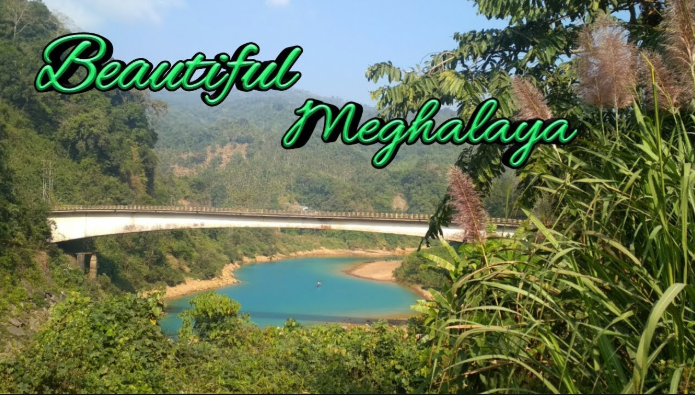In this part, we’ll be covering one of the states from Northeast India. This state is an embodiment of eternal bliss and tranquillity wrapped in absolute beauty. MEGHALAYA is one such state whose literal meaning is “The Abode of Clouds”.
Do you know which state records the highest rainfall across the globe? Which state has the tallest plunge waterfall in India?
The capital city is Shillong which is also known as “Scotland of the East”. Shillong is a city that is known for its music, unique culture and cheerful people. Hence, it is also known as the “Rock Capital of India”.
So, let’s begin with exploring such innumerable facts and features, but before that look at the state symbols as well which form an integral part of any state –
Table of Contents
State Symbols
| State Capital | Shillong |
| State Animal | Clouded Leopard |
| State Bird | Hill Myna |
| State Tree | Gamhar |
| State Flower | Lady’s Slipper Orchid |
| State Dance | Doregata, Laho, etc. |
| State CM (Present) | Conrad Sangma |
| State Governor (Present) | Tathagata Roy |
Coming onto the very first feature i.e. –
CULTURE Meghalaya GK Notes
The culture of Meghalaya is mainly dominated by the main ethnic communities that are: The Khasi’s (of Mon-Khmer ancestry), The Garo’s (of Tibeto-Burman origin) and The Jaintia’s (from South East Asia).
Festivals
- Festivals in Meghalaya play an important role in the celebration of their life. The following points show the important festivals that one must definitely experience.
- Shad Suk Mynsiem – It is the most important festival of the Khasi Clans of Meghalaya. The festival is celebrated in the month of April every year. This festival is also known as ‘Move of cheerful hearts’ because it is an extraordinary celebration of moves. This is a three-day festival and popularly known as ‘Shad Phur’.
- Behdeinkhlam Festival – This is a four-day festival which is celebrated by the Jaintia Clan. The word “Behdeinkhlam” means “Chasing away the Plague” and is believed to ward off evils. It is celebrated in the month of July every year.
- Wangala Festival – The Wangala Festival is celebrated by the Garo people. It marks the end of the agricultural year and is a thanksgiving festival for Misi-A-Gilpa-Saljong-Galapa, the god of fertility. This festival is now popularly known as Hundred Drums Festival.
- The other famous festivals in Meghalaya are Autumn Festival, Strawberry Festival, Ranikor Festival and Bacardi NH7 Weekender.
Dances and Music
- The traditional folk dances in the state of Meghalaya are generally held in public places or in open grounds. Different communities have different dance forms that are performed very beautifully.
- Doregata – This is a very popular dance form that is performed by the Khasis. In this dance form, the women try to knock off the turban of the male partners, by only using the head. No other body part is allowed to be used during this effort.
- Laho Dance – The Laho Dance is very popular among the Pnar Tribe. In this dance form, two men dance on either side of a woman. The dance is accompanied by a stand-up comedian who has the gift of impromptu humorous recitations.
- The other famous dance forms are Ka Shad Suk Mynsiem, Ka Pom Blang Nongkrem and Ka Shad Shyngwiang Thangiap.
- English is the official language and the most spoken language. The other main languages of the state include Khasi and Garo. The other languages used are Panar, Tiwa, Baite, Nepali language.
- The tribes of Meghalaya i.e. Garo, Khasi and Jaintias have their own unique traditional dresses. The costumes of the Khasis include Jainsem and Tapmohkhlieh. The costumes of Khasis are same as Jaintiasare with the addition of Kyrshah, Thoh Khyrwang, Dakmanda and so on. The Garos wear Rigitok.
- Rice with spicy meat and fish preparations is the staple diet of the people of Meghalaya. Kyat is a local drink made of rice and beer and alcohol features in their everyday menu. Bamboo shoots are used in curry preparations and it is one of their favourites. They eat wild animals like deer, bison, wild pigs, fish, prawns, crabs, eels and dry fish.
Tucked away in the hills of eastern sub-Himalayas, Meghalaya is one of the most beautiful states in the country. Let’s explore its beauty in depth.
GEOGRAPHY
Nature has blessed the state with abundant rainfall, sun-shine, virgin forests, high plateaus, tumbling waterfalls, crystal clear rivers, meandering streamlets and above all with sturdy, intelligent and hospitable people.
- Latitudinal Extension – 20.10N and 26.50N
- Longitudinal Extension – 85.40E and 92.50 E
- Area – 22,429 km2
Rank in India – 22nd
- Population – 2,964,007
Rank in India – 22nd
- Boundaries – The state is bounded to the south by the Bangladeshi divisions of Mymensingh and Sylhet, to the west by the Bangladeshi division of Rangpur and to the north and east by Assam.
- With average annual rainfall as high as 12,000 mm (470 inches) in some areas, Meghalaya is the wettest place on earth.
- The Meghalaya forests are considered to be among the richest botanical habitats of Asia.
- The highest point in Meghalaya is Shillong Peak, which is a prominent IAF station in the Khasi Hills overlooking the city of Shillong. It has an altitude of 1961 m.
- Many rivers and streams flow out of the plateau, creating deep, narrow, steep-sided valleys; the most important is the Umiam-Barapani, which is the major source of hydroelectric power for Assam and Meghalaya states.
- Climate – The climate of Meghalaya depends upon its altitude. That is why Khasi and Jaintia Hills have a very soothing climate where you can rejuvenate because of their high altitude. The region of Meghalaya where the temperature is too hot and humid in summers are Garo Hills because of the low altitude.
The main influence is of rainfall which determines its climate. The western part of the state receives 2600 mm rainfall, the south-eastern part receives 4000 mm and the northern part receives 2500 to 3000 mm. It is Cherrapunji (one of the world’s wettest regions) that receives the highest rainfall somewhere around 12000 mm annually. With such a high amount of rainfall, Meghalaya is the wettest state in India.
- The topography of Meghalaya comprises of landscapes that have a blend of mountain and plateau regions and this is why it is also known as Meghalaya Plateaus.
- Soil – The texture of soils varies from Loamy to fine Loamy. The soils of the alluvial plains adjacent to the northwest and southern plateau are very deep, dark brown to reddish brown in colour and sandy-loamy to silty-clayey in texture.
Now, it’s time to get into the administrative section i.e. –
POLITICS Meghalaya GK Notes
The state has a Unicameral Legislature. The Legislative Assembly has 60 members – 29 from Khasi Hills, 7 from Jaintia Hills and 24 from Garo Hills.
- Meghalaya was originally comprised of two districts and three sub-divisions. In order to accelerate the pace of development and to bring the administration closer to the people, the state has been reorganized into eleven administrative districts and four sub-divisions.
- Khasi Hills Autonomous District Council, Garo Hills Autonomous District Council and Jaintia Hills Autonomous District Council are the three Autonomous District Councils in the state.
- The Meghalaya High Court is the High Court of the state of Meghalaya. It was established in March 2013. Earlier, a bench of Guwahati High Court had jurisdiction over the state of Meghalaya. The seat of the High Court is at Shillong, the capital of Meghalaya. The current Chief Justice is the Hon’ble Justice Biswanath Somadder who took oath on 27 April 2020.
- Representation in the Parliament –
Lok Sabha – 2
Rajya Sabha – 1
- Present and 12th CM – Conrad Sangma (National People’s Party)
Present Governor – Tathagata Roy (from BJP since August 2018)
- First CM – Williamson A. Sangma, a Garo leader who served from 1919 to 1990. He was also the first Governor of Mizoram.
First Governor – Braj Kumar Nehru (April 1970 – September 1973)
Here are Some of the Interesting Facts of Meghalaya –
- India’s longest cave system is located in Jaintia Hills in the state of Meghalaya. The cave system is more than 22 km long and connects two separate caves in the region.
- In July 2018, the International Commission Stratigraphy divided the Holocene epoch into three, with the late Holocene being called the Meghalayan stage/age.
- Nohkaliaki Falls with a height of 1115 feet is the highest plunge type waterfall of India. This is located near Cherrapunji.
- The town of Sohra (Cherrapunji) in the Khasi Hills south of capital Shillong holds the world record for most rain in a calendar month, while the village of Mawsynram, near Sohra (Cherrapunji), holds the record for the most rain in a year.
Do you know about the economy of Meghalaya? Which state is mostly famous for its cleanliness?
So, let’s end this topic for now, we’ll continue with more such interesting facts and features in the next part. If you don’t want to miss it, click here – Know your State ‘Meghalaya’ – Part 2. Hope this will help you in boosting your preparation for competitive exams such as CDS, SSC CGL, RRB NTPC, BANK PO, etc.




